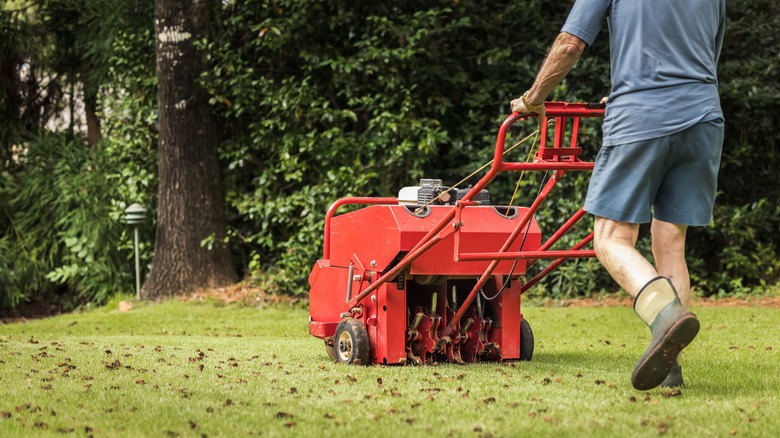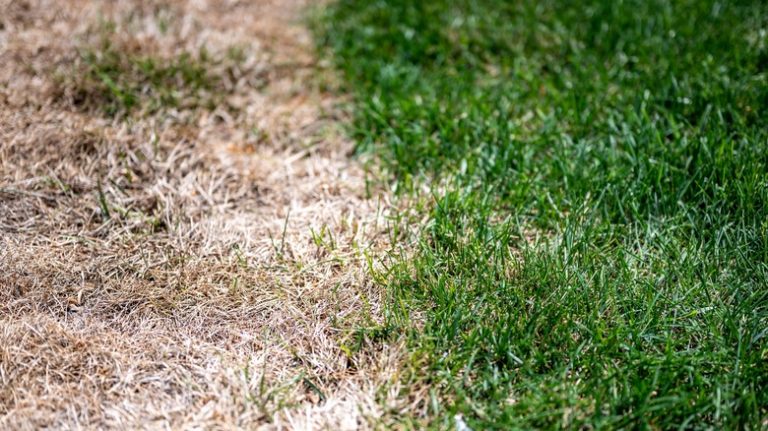You might start to feel like no matter how much it rains or shines, your lawn just never seems to get any better. Should you aerate your lawn, apply a fertilizer, mow less often, or simply leave it alone and hope it grows back by itself? Maintaining a healthy grass lawn can be hard work, but if you’re ignoring your lawn’s soil health, all your efforts might be in vain. One of the worst problems to face with lawn care is dense, compacted soil. If your soil is compacted, water, fertilizer, and other nutrients won’t be able to reach your grass roots, so you could be pouring money down the culvert. While every lawn is unique, there are some classic signs of compact soil to watch out for; if your lawn seems thin, pale, and patchy and you have an abundance of weeds taking over, it’s time to aerate your lawn. Another quick way to tell? Take a standard size screwdriver and stick it in the soil. If the tool doesn’t go into the ground easily, ready the aerator.
People who live in an area with dense, clay soil, are more likely to have problems with compaction and poor drainage, but any type of lawn can benefit from a little fresh air now and then. Why is aerating so important and how can it help your other lawn care habits soak in? Read on to learn more about the signs and symptoms of a suffocated lawn and how aerating can help.
Keep your eyes peeled for these signs

Pale, yellowish, or brown grass blades indicate that your soil has become too tight. Every time water hits the surface, it will pool and essentially drown your grass from above, which is why your lawn never improves no matter how often you water. Compacted soil is something that happens over time, but it can also be caused by repeated pressure. If your family frequently walks the same path through the yard or you recently removed a shed or playscape, you may notice a distinct area of dying grass due to compacted soil.
Another telltale sign to watch out for is aggressive weed growth. Most grass roots only reach about six inches to two feet deep. Still, even deep grass roots can’t compete with perennial weeds. Some weeds like Canadian thistle can even have root depths up to 15 feet. Water may not be able to reach through the compacted soil, but any moisture seeping up from underground will be quickly slurped up by weeds. As the grass continues to weaken and die out, the weeds will only get stronger and eventually overtake your lawn.
How aerating can save your lawn

Fear not, gentle lawn owner. Compacted soil may seem tricky to remedy, but with an aerator machine, your lawn and garden can be revitalized. First, aerating will improve overall drainage, cutting through the top upper layer and helping water flow down to the roots where it belongs. Grass roots need more than just a well-draining water source to thrive; they also need oxygen around their roots. “Aerating” the soil quite literally pushes more air down to the roots, which will help the grass produce more energy and encourage growth. Eventually, the pockets of air will close in again, allowing the entire lawn to loosen up, and improving soil quality over time.
You may not even have to wait long to give your lawn a boost. While it seems like most lawn and soil maintenance takes place just before the growing season, the best time to aerate your lawn is in late spring through summer. Because the grass grows fast during summer, it’ll quickly heal up from the aerating process and start to expand into newfound root space. Once completed, the results can last for two to four years before it’s time to aerate again, so you can kick up your feet, watch your lawn spring back to life, and push a screwdriver into the soil without batting an eye.




